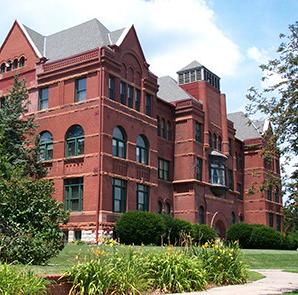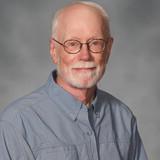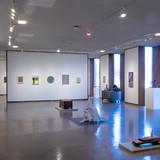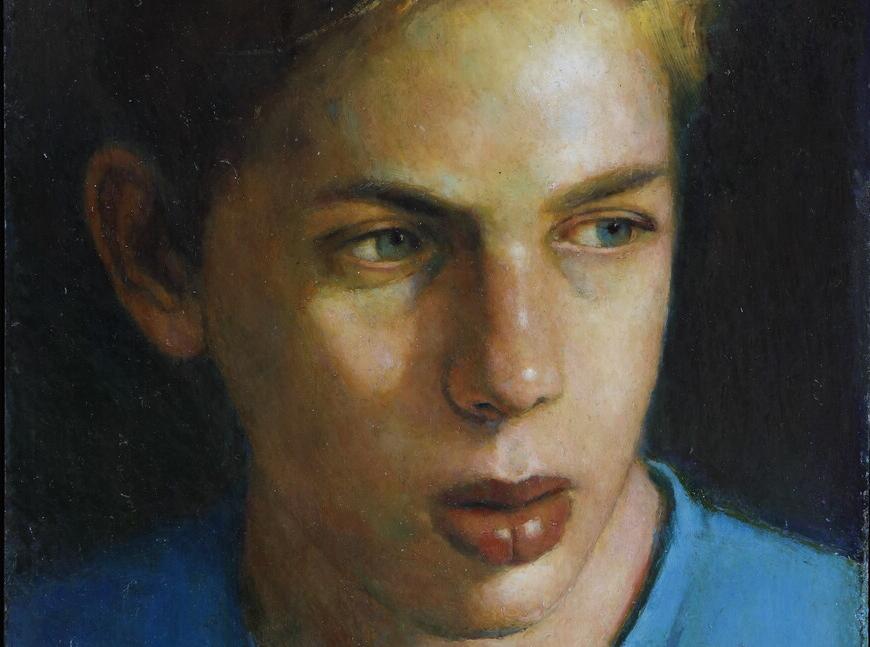The work of the late realist artist 斯蒂芬。 Brown will be featured at NWU’s 大画廊 later this month. 这次展览的题目是 这一切的痛苦之美:斯蒂芬·布朗的画作. 这 will mark the first time the artist’s work 有 been exhibited in Nebraska.
The exhibition features over 70 绘画 spanning the late artist’s career. Born in Greeley, Colorado, Brown spent his career in New York City and New England. He received The Academy Award for Painting from the Ameri可以 Academy of Arts and Letters, 国家设计学院颁发的格拉迪斯·爱默生·库克奖, and the Benjamin Altman Prize for a landscape done by an Ameri可以 citizen from the National Academy of Design. Brown is the subject of numerous one-person museum and gallery exhibitions.
展览由艺术副教授David Gracie策划, 谁是布朗在哈特福德艺术学校的学生. 格雷西还为此制作了一份目录和文章. The exhibit opens on November 9 with a reception on November 12 from 5-7 p.m. in 大画廊, located inside the Rogers Center for Fine Arts at 50th Street and Huntington Ave. 画廊开放时间为周二至周五上午10点.m. 到下午4点.m. 周六至周日下午1点至4点.m. 画廊只在下列期间预约开放 感恩节和寒假. 如需预约,请联络David Gracie (dgracie [at] jmxc.net (dgracie[在]nebrwesleyan[点]edu)).
这一切的痛苦之美:斯蒂芬·布朗的画作, 艺术副教授大卫·格雷西的一篇文章
I 是 nervously awaiting my professor’s arrival on the first day of Painting Composition class at the Hartford Art School in the late 1990’s. With one foot out the door, Professor 斯蒂芬。 Brown appeared and waved his arms directing us outside. 外面的天气很好. 夏末即将来临 a 新英格兰秋季. 斯蒂芬。’s instructions were to compose a picture with sticks, leaves, acorns, 或者其他 在撒谎 在艺术建筑附近的草地和地面上. I didn’t understand what 斯蒂芬。 是 talking about as he spoke passionately about movement, 平衡和框边, 但我 去了 工作 无论如何,认真地. 我还能想象出他的眼神. 我仍能听见 他声音里的兴奋. 当斯蒂芬 参观了 我的那块草坪 h他把一根棍子调整了四分之一英寸, 提高了 的板块r,扔 还有一个. He 走近一点 然后 回来. 斯蒂芬以画家的身份看世界.
斯蒂芬·布朗走了 a 艺术和生活之间的界限. 绘画是他看待世界和记录时间的方式. Reconciling the aching beauty of life within the framing edge of his 绘画 是 his aim. 绘画是斯蒂芬对活着的肯定.
斯蒂芬。 wanted to at once announce the sometimes crude and other times remarkable plasticity of oil paint while holding reverence for the landscapes he lived in, 他爱的人, 围绕着他的小摆设. 这种摩擦 媒介/科目 / 艺术/生活 可以, 在特殊时刻, 创造超越. As his student, 斯蒂芬。 often referred to these moments of transcendence as “magic.” He taught me that you 可以 never predict when this “magic” will happen until it arrived. 你会恍然大悟.
当他做小画的时候 斯蒂芬。 经常把画放在腿上工作吗. 他形容这是“几乎开始了” 顶部或 在它里面.” Having the painting orientated this way made it clear that it 是 both an object and an image. 他把画抱在腿上, he would use jeweler’s magnifying goggles to peer 成 the depth of the surface. He would build opaque 段落, glaze with transparent colors, and 然后 scumble translucent paints 在上面. 他总是小心翼翼地不落入一个系统,他会磨磨蹭蹭地去 揭示 段落 成 早些时候,层. 减法元素允许更早的时刻 绘画的世界 浮出水面与新的痕迹一起浮出水面. Like riding a wave, 斯蒂芬。 painted with intuition and skill as each move flowed 成 the next move. 随着每一个看似最终的决定,又出现了另一个问题. 在某一点上, 在浪尖上, he painted for the moment the inertness of the painting sparked to life with the energy of the world.
斯蒂芬。 built his 绘画 with only a rough blueprint in his mind’s eye. 他会把它们建起来,然后又把它们拆掉. 他会刮,砂,切割,胶,釉,重复. 这个过程不是一条直线. 他在哄什么东西 of 以太. 斯蒂芬。 understood the weight and privilege of participating in the history of painting. In class, he recalled how his mentor and friend Alice Neel only really liked one artist——弗朗西斯科·戈雅. I think Neel’s narrowness fueled 斯蒂芬。 to be open to myriad ways of working, and “openness” in turn allowed 斯蒂芬。 to always be searching within his own 绘画.
当我开始 17 year of teaching at 内布拉斯加州卫斯理大学, I 可以 reflect on how each of my students is 教会了斯蒂芬作为一个画家看待世界的方式. That same way of seeing which I first witnessed on a fall day 回来 in Hartford, CT.
斯蒂芬, 他的形象的可能性 绘画 是 一直到最后都在变化. He would take dried bits of paint and glue them to the painting surface and incorporate them 成 the existing surface. 他经常在画中发现框架的边缘 过程 然后用胶带和台锯重新定义它们. 在课堂上,他描述了在他的画的顶部粘上一条木条的过程 提供更多的 空气和 空间,让工作 呼吸. 活性表面, 同时充满了不同层次的分辨率, 是不是可以类比世界在我们脚下移动.
他的过程是加法和减法, 隐藏和暴露, 这些画与时间有着复杂的关系. M任何不同的标记,段落和编辑, 不同的时刻正在形成吗. You will see a gestural brush mark from early in the 过程 next to a jeweled passage that 有 被刀片刮过. 就像一个人站在你面前, 柜台上的一个东西, 或是你凝视的风景, 当你在的时候,你感觉到历史在引导你 现在 看他的画. The details and order of that history are not clear, but you are convinced of its presence.
Color in 斯蒂芬。’s 绘画 可以 simultaneously stand on its own merit while, 同时, 无缝集成到完整的图像. He understood being a realist painter doesn’t simply mean that you copied what 是 before you. 油漆颜色 i特立独行的 is equally real and 有 its own material, conceptual and expressive potential. 关于斯蒂芬作品中的光已经写了很多. 我认为斯蒂芬对光的运用是 architectural supports; the genius of the work is his use of color. Many times in class 斯蒂芬。 would walk up to my easel and say, “make that a better color.” He did not mean the color I 是 mixing 是n’t an exact match for the one I saw in the class still life, 他的意思是我应该继续寻找 非凡的.
斯蒂芬, his own laborious and obsessive painting 过程 could be exhausting. He learned that if he “put all of his eggs in one basket” it would take an emotional toll. 通过经验, 斯蒂芬。 developed a way of working where he would have many 绘画 going at once. 他会设置一个鸡蛋计时器,然后疯狂地画一段时间. 铃声一响,他就换画,重设计时器. 这, 他说, kept him concentrating on the most important things: the parts that would make him happiest. Reflecting 现在, I believe this 过程 是 not just to break obsessive tendencies. 这个过程让更多他喜欢的生活进入了工作室. 把画放在腿上, 凝视着水面, he painted with his entire history and his love at the point of his brush.
当我开始 17 year of teaching at 内布拉斯加州卫斯理大学, I 可以 reflect on how each of my students is 教会了斯蒂芬作为一个画家看待世界的方式. That same way of seeing which I first witnessed on a fall day 回来 in Hartford, CT. Many of my former students plan to come 回来 to campus to see 斯蒂芬。s’s show. 然后继续.
这次展览是由工作、智慧促成的, 以及Gretchen Treitz-Martin的慷慨. 我是 并且将会是 永远心存感激.
大卫·格雷西 艺术副教授
内布拉斯加州卫斯理大学 2021











